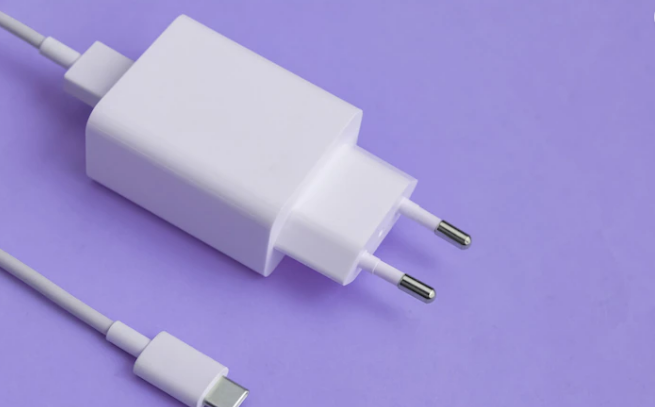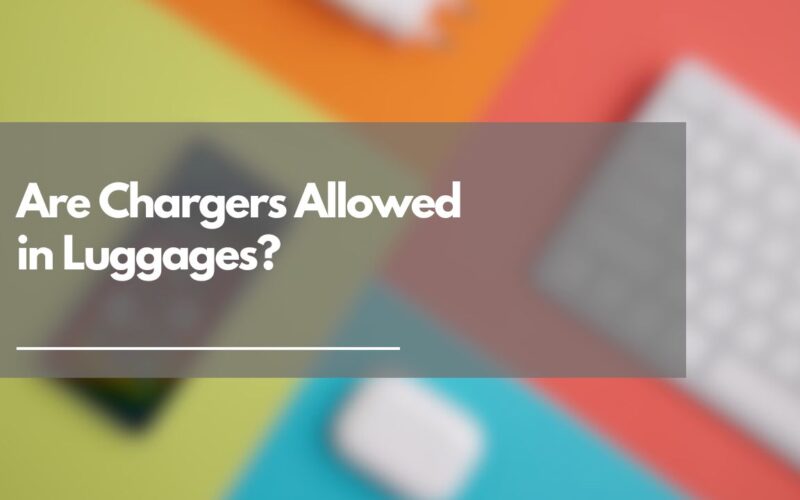As an Amazon Associate, I earn a small commission from qualifying purchases. Learn more about this.
You’ve got your bags ready, clothes perfectly folded, your essential toiletries are sorted, and there’s just one thing left to pack – your charger. But then, are chargers even allowed in your luggage when you’re about to board a flight?
Is Charger Allowed in Luggage?
Whether it’s for your phone, your laptop, or any other gadget, chargers have become an essential part of our travel kit in this digital age.
Now, straight to the point: Yes, you can carry chargers in your luggage when you’re travelling by flight. Both your carry-on and checked luggage can include chargers.

The Transportation Security Administration (TSA), the authority that oversees flight safety in the United States, doesn’t list chargers as a prohibited item. Similarly, most other aviation authorities worldwide follow suit.
However, here’s an important thing to remember: while chargers are allowed, it’s always recommended to keep them in your carry-on luggage rather than checked luggage. Why, you ask? It’s simple.
In the unlikely event that your luggage gets misplaced, having your charger in your carry-on ensures that you won’t be left in a lurch with a dead battery upon landing.
Also, as with toys that are prohibited, there could also be chargers that may likely not be accepted in your luggage. Let’s take a look at this in the next section.
Are there any types of chargers that are prohibited?
When it comes to regular chargers for your smartphone, tablet, laptop, or other similar devices, there’s generally no issue. You can carry these chargers in both your carry-on and checked baggage without any restrictions.
However, certain types of chargers can raise eyebrows, particularly those associated with high-capacity lithium batteries, which have been the cause of a few incidents in the past.
For example, chargers that come with lithium batteries or power banks integrated within them, often used to charge devices on the go, fall under specific regulations.
These chargers or power banks are restricted to carry-on luggage only according to FAA and IATA guidelines. They’re not allowed in checked luggage because of the risk of lithium batteries catching fire.
In the cabin, such an event can be promptly handled, but in the hold, it could lead to dangerous situations.
The exact rules can vary based on your airline and the countries you are traveling to or from, so it’s always best to double-check with your specific airline’s regulations.
Accessories that shouldn’t be in your luggage
For starters, any sharp objects that could potentially be used as a weapon, such as box cutters, ice picks, or knives, are prohibited in carry-on luggage. If your charger looks this way, the same rule should apply.
However, these objects can usually be packed in checked luggage, but there can be exceptions based on your destination’s local laws. Always make sure to check ahead.
Firearms, ammunition, and firearm parts are also strictly prohibited in carry-on luggage and are heavily regulated in checked luggage.
If you plan on traveling with any of these, you must declare them to your airline during check-in. Specific packing requirements often apply as well, and these can vary by airline and destination.
It’s also important to note that explosives or flammable items, obviously, are a strict no-go in all types of luggage. This includes fireworks, gasoline, and even aerosol cans that aren’t toiletries or personal care items.
But what about less obvious items?
Well, many travelers may not realize that tools greater than seven inches in length, such as hammers or screwdrivers, cannot be packed in carry-on bags.
Interestingly, the list also includes self-defense items like pepper spray and martial arts weapons. These are generally not allowed in carry-on bags but may be packed in checked luggage, subject to specific regulations.
Let’s also not forget that all airlines prohibit lithium batteries that aren’t installed in a device in checked baggage due to fire risk. In carry-on bags, the rules can be a little more lenient but are still subject to certain restrictions.
Final Thoughts
To summarize, while you’re generally good to go with standard device chargers, it’s those beefy power banks and chargers with built-in lithium batteries where you need to be careful. As always, it’s better to be safe and stay informed to ensure a hassle-free travel experience.







